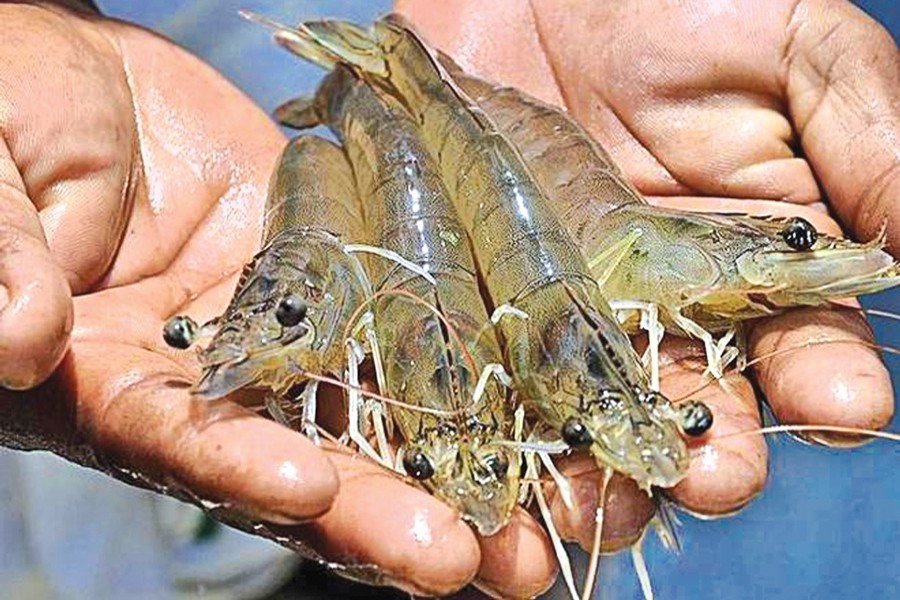Despite the fluctuating trends in shrimp and other frozen fish export over the past few years, hope for recovering the better prospect of overseas marketing never actually waned. But lately, with some developments in this sector, it is difficult to say if the prevailing slump in export can be overcome in the near future. In other words, what would it take to energise exports with increased production and greater market access?
The question is relevant given the state of export performance at present. According to Export Promotion Bureau (EPB) data, export earnings fell by 27.39 per cent to US$208.27 million during the first five months of the current fiscal year (FY 2022-23) from $286.85 million in the corresponding period (Jul-Nov) of last FY. A FE report, quoting industry insiders, attributes this slump to declining demand for expensive fish varieties, particularly shrimps (the type Bangladesh exports) in the up markets. In FY 2010-11, export earnings from local frozen fish, including shrimp, stood at $625.04 million and has been on a slide since then, except for the FY '14 when the sector earned the highest $638.19 million. The downward trend continued until FY 2019-20 to reach $456.15 million, before recovering to some extent in the following two FYs when export earnings rose to US$477 million and US$532.94 million respectively in FY 2020-21 and FY 2021-22. The FE report further adds that both prices and demand for frozen fish, particularly shrimps, declined in the major markets because the global market is flooded with cheaper shrimp variety called vannamei. That is to say, the low cost variety has captured global market to the extent that the high value shrimp namely Bagda for which Bangladesh had attained much repute since decades is no longer in a position to cause any dent in the overseas markets.
Export is believed to have been hit by undiversified product range. According to industry insiders, Bangladeshi shrimp, recognised as a delicacy as well as a high priced kitchen item overseas, is struggling to retain its market share amid uneven competition with low priced varieties from other sources.
Clearly, there is a shift in market behaviour. This is not at all unusual. Consumer tastes and preferences keep changing, and exporters have to continually remain tuned to the market behaviour and when necessary, change marketing strategy by way of new product development and adaptation. It is here that the need for introducing newer varieties of shrimps in line with market demand comes into consideration. Otherwise reliance on a costly and prime variety such as Bagda shrimp may not be the best practice to stick to. According to Bangladesh Frozen Food Exporters Association (BFFEA), 85 per cent of the shrimp exported from Bangladesh goes to the European countries, while 15 per cent goes to the US, Japan and others. EPB data show Bangladesh's share in the world shrimp market has decreased from 4.0 to 2.0 per cent in the five years till 2021. During this time, shrimp exports have fallen by 33 per cent and production has shrunk by 28.5 per cent. As a result, frozen food - comprising mainly shrimp - once the third major export item of Bangladesh next to RMG, jute and jute goods, has now dropped to seventh position.
As mentioned already, the main reason for not being competitive is because of the low price of the shrimp variety-Vannamei (or white-leg shrimp), a disease-tolerant and high-yielding variety. The Vannamei variety, because of its high yield and low production cost, has already gained wide popularity capturing 77 per cent of global demand, according to reports. However, this variety did not receive government's nod for commercial cultivation, presumably because of its low quality compared to the better and high priced varieties cultivated and exported from the country.
There are conflicting views as to whether Bangladesh should go for commercial cultivation and export of Vannamei shrimp. According to some industry people, commercial cultivation of Vannamei variety of shrimps could help the sector survive. The BFFEA president wants that the government change its policy by allowing commercial production of Vannamei. However, it has been learnt that there are quarters within the industry who believe that commercial cultivation would be injurious to local varieties.
Lately, as newspaper reports say, the government is going to allow commercial cultivation of the Vannamei variety. The government had earlier gone for small-scale experimental farming of this variety under a pilot project in the southern coastal region of the country, which proved to be a success in so far as higher yield is concerned. The authorities concerned including the ministry of fisheries are reportedly at work to give their decision soon. It would be important to monitor the cultivation process as well as other related issues to assess the outcome of introducing the non-native shrimp variety.


